Typography is an often overlooked but essential element in branding. The fonts and typefaces used in a brand’s logo, website, and marketing materials can significantly impact how the brand is perceived by its audience.
Master fonts, or the primary fonts used in a brand’s visual identity, play a crucial role in shaping a brand’s identity and communicating its values and personality to consumers. However, typography plays a vital role in shaping brand identity. Typography is arranging fonts to make written language legible, readable, and appealing.
Choosing the right font can create visual consistency across all brand touchpoints, establish brand personality, and evoke emotions in your audience. We will also discuss The Role of Master Fonts in Branding and how it affects your brand’s personality. We will provide tips on choosing the right typeface for your brand based on understanding your target audience and industry competition.
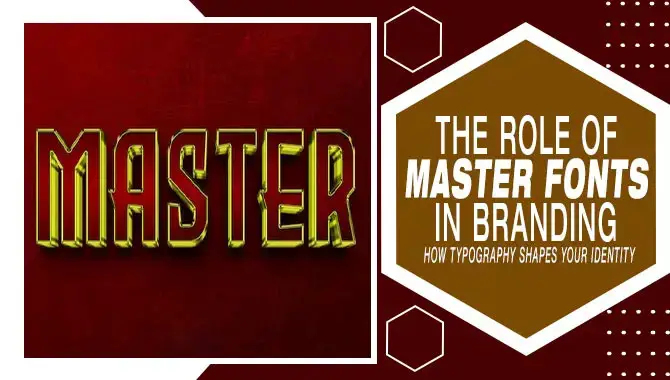
Understanding The Role Of Master Fonts In Branding
When it comes to branding, establishing a visual identity that resonates with your audience is crucial. One key element in achieving this is the use of master fonts. These unique typefaces can communicate a brand’s personality, values, and style to its audience in a way that resonates with them.
By choosing the right master font, you can differentiate your brand from competitors and create a memorable impression. Consistency across all marketing materials is important for maintaining brand recognition and credibility.
With the help of a professional designer, identifying the right master font for your brand’s unique needs becomes easier, helping you create a visual identity that speaks to your audience.
Key Components Of Brand Identity
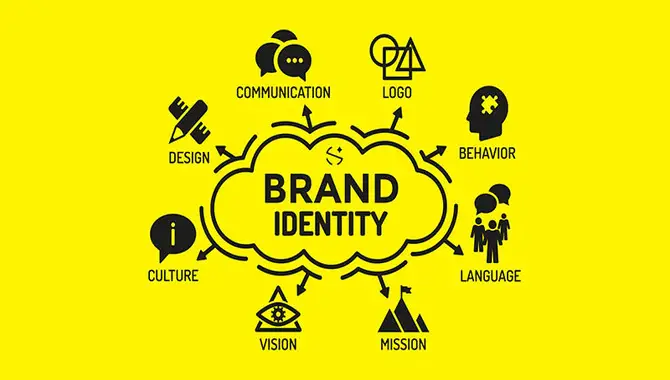
Consistency is crucial when it comes to building a strong brand identity, and typography plays a significant role in achieving that. Choosing the right typography can evoke specific emotions and convey the desired message to your audience.
The master font, or primary font, is one of the key components of brand identity that helps create consistency across all brand materials. Customized typography can make your brand stand out and be more memorable, but it’s important to maintain consistency to build trust and recognition with your target audience.
So, whether creating a logo or designing marketing materials, choosing the right typography is essential for creating a cohesive and effective brand identity.
Typography As A Vital Brand Component
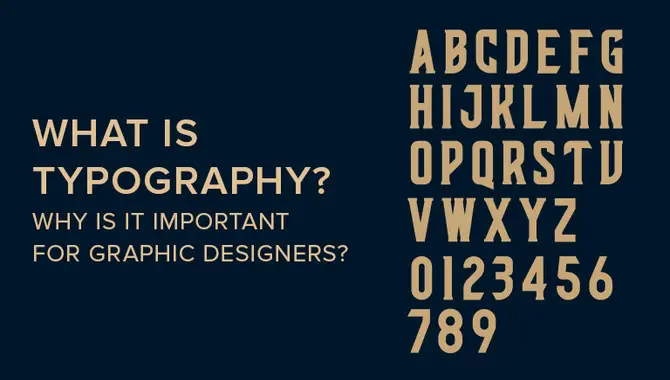
The choice of typography can significantly impact a brand’s identity, as it plays a vital role in shaping a brand’s personality. Typography is more than just selecting a font; it can convey different emotions and messages to the audience. Master fonts are pre-designed typefaces carefully crafted to reflect a specific brand’s unique identity.
They can be customized to suit the brand’s needs and help create a consistent look across all marketing materials. By choosing the right master font, brands can enhance their recognition and establish a strong visual identity in the minds of consumers.
The Importance Of Choosing The Right Font
Choosing the right font is a crucial aspect of branding that can significantly impact how customers perceive your brand. Different fonts evoke different emotions, and choosing one that aligns with your brand’s personality and values is essential.
For instance, if you’re creating a luxury fashion brand, you might consider using a serif font that conveys elegance and sophistication. On the other hand, if you’re creating a fun and playful brand, you might opt for a more whimsical sans-serif font. In either case, selecting the right font is critical in ensuring your brand message resonates with your target audience.
Anatomy Of A Font

When it comes to typography, understanding the anatomy of a font is crucial for creating a consistent and visually appealing brand identity. The basic elements of typography include the typeface, size, weight, and style.
Serif and sans-serif fonts have distinct visual characteristics that can convey different tones and moods while kerning, tracking, and leading affect legibility and readability. By carefully choosing the right font for your brand and understanding its components, you can create a strong visual identity that resonates with your target audience.
Serif Fonts
Due to their traditional and formal appearance, serif fonts are a popular choice for brands in industries such as finance or legal services. These fonts contain small lines or flourish at the ends of their strokes, which makes them easier to read in print materials like books and newspapers. However, it’s important to note that serif fonts may not be the best option for brands that want to appear modern or edgy.
Popular serif fonts include Baskerville, Times New Roman, and Georgia – all known for conveying sophistication and trustworthiness through visual aesthetics. Choosing the right font for your brand is an important decision that should align with your brand personality and values.
Sans-Serif Fonts
When it comes to branding, choosing the right font can significantly impact how your audience perceives your brand. One popular choice for modern and minimalist designs is sans-serif fonts. These fonts are known for their simplicity and clarity, making them versatile for body text and headings. Additionally, sans-serif fonts are easily read on digital screens, making them a sensible choice for brands with a strong online presence.
Popular examples of sans-serif fonts include Helvetica, Arial, and Futura, each with distinct visual characteristics that can convey different tones and moods. By choosing the right sans-serif font for your brand, you can create a strong visual identity that resonates with your target audience while maintaining visual consistency across all marketing materials.
Script Fonts
Script fonts are popular for brands looking to convey elegance and sophistication. These fonts mimic handwriting, which makes them ideal for formal brandings such as wedding invitations or luxury fashion brands. However, it’s important to pick a script font that is legible and appropriate for your brand’s message and tone.
Choosing the right script font can add a touch of personality and style to your brand, but pairing it with simpler, more legible fonts is essential to ensure readability. In summary, script fonts are an excellent option for brands looking to add a personal touch to their visual identity.
How Typography Shapes Your Brand Identity
Typography plays a crucial role in shaping your brand identity. The right font choice can convey the personality and values of your brand, making it more memorable and recognizable to your target audience. Consistency in font usage across all marketing materials is also important for brand recognition.
Different fonts can evoke different emotions, so choosing the appropriate one for your brand is essential. Moreover, custom fonts can be created specifically for a brand to enhance its unique identity further, making it stand out from competitors. With typography being such a vital aspect of branding, it’s essential to make sure that you choose the right typefaces that reflect your brand’s personality and resonate with your audience.
Creating Visual Consistency
Consistency is key when it comes to creating a visual identity for your brand. And typography plays a critical role in establishing that consistency. By using a limited number of fonts that reflect the personality and values of your brand, you can ensure that all marketing materials are consistent in their messaging and design. Fonts with unique personalities,
such as handwritten or script fonts, can add character to your brand identity, but it’s important to consider legibility and readability when choosing fonts for your branding. With consistent use of typography. You can create a strong visual identity that helps your brand stand out from the competition.
Establishing Brand Personality
Typography plays a crucial role in establishing your brand’s personality and identity. Every font has its personality, which can communicate your brand’s values and messaging to consumers. Serif fonts are often associated with tradition, elegance, and sophistication, while sans-serif fonts are seen as modern, clean, and minimalistic.
Script fonts can convey a sense of luxury or playfulness, depending on how they are used. Choosing the appropriate font for your brand is vital to create a cohesive visual identity that aligns with your brand’s personality and message.
Tips For Choosing The Right Typeface For Your Brand
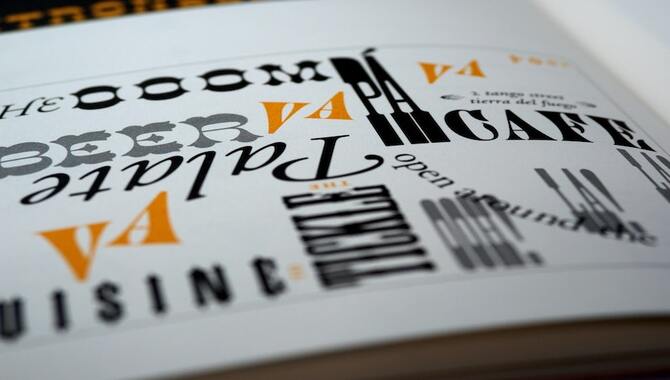
When choosing the right typeface for your brand, it’s important to consider various factors. The personality and tone of your brand should be at the forefront of your decision-making process. An easy-to-read, legible typeface that can maintain consistency across different mediums is crucial for brand identity.
Unique fonts that stand out from competitors can help set your brand apart. Experimenting with font pairings can create a cohesive visual identity, but seeking professional help from a graphic designer . Or branding agency may also prove useful in making the best choice for your brand.
Understanding Your Target Audience
Understanding your target audience is key when choosing the right typeface for your brand. Your typeface should be tailored to the personality and values that resonate with your demographic.
Whether older or younger, male or female, or from a specific cultural background. By considering these factors, you can choose a font that communicates your brand’s values . And messaging in a way that resonates with your audience.
Striking the right balance between uniqueness and readability is crucial. To making your visual identity stand out in a crowded marketplace. Ultimately, choosing the right typography for your brand can create a memorable and engaging experience for your customers.
Consider Your Industry And Competition
When choosing the right typeface for your brand, considering your industry and competition is crucial. Different industries require different types of typography to convey their message effectively. And the typeface you choose should be appropriate for your audience.
Look at the fonts your competitors use and choose something that sets you apart while still fitting in with industry standards. It’s important to ensure that the chosen typeface is legible, recognizable, and memorable. Ultimately, the typeface you select should help create a strong brand identity that resonates with your target audience.
Choosing The Right Typeface For Your Brand Personality
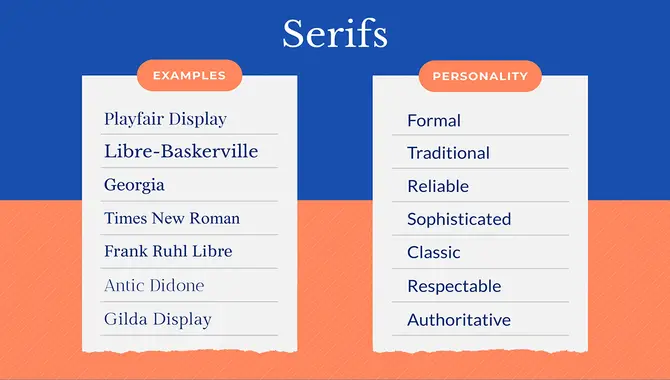
When choosing the right typeface for your brand personality, there are several factors to consider. The right typeface can convey the values and personality of your brand and help establish a strong visual identity.
Serif fonts, for example, are often associated with tradition and stability, while sans-serif fonts communicate modernity and simplicity. Script fonts, on the other hand, convey elegance and sophistication. Display fonts can be used for headlines or logos to grab attention and add a touch of creativity to your brand’s identity.
Finally, testing the chosen font’s legibility across different media and sizes is crucial before finalizing it. By keeping these considerations in mind. You can ensure that your choice of typography aligns with your brand’s personality and values. Creating a lasting impression on your target audience.
Conclusion
Typography plays a crucial role in shaping your brand identity. It is one of the essential components of your brand’s visual language that helps create a memorable and consistent image in the minds of your customers. Choosing the right typeface for your brand can help you establish authority, credibility, and personality.
The Role of Master Fonts in Branding is crucial in creating a strong and memorable brand identity. Typography can evoke emotions, convey messages, and communicate the essence of your brand to your audience.
By carefully selecting and utilizing master fonts, businesses can create a visual language that resonates with their target market and sets them apart from competitors. Whether you’re designing a new logo or revamping your existing branding, it is essential to consider the role of typography in your strategy.
Frequently Asked Questions
What Is The Importance Of Fonts In Brand Identity?
Fonts are a critical component of brand identity and recognition. Different fonts can convey various emotions and personalities for a brand, making it essential to choose the right one. Consistency in font usage across all branding materials helps strengthen brand recognition, which is vital for building brand awareness.
The right font choice can also help establish credibility and professionalism for a brand,. Making it crucial to select one that aligns with your brand’s image and message.
What Is The Role Of Typography In Identity?
Typography plays a vital role in establishing a brand’s visual identity. The choice of font can communicate the brand’s personality, tone, and values. Consistent use of typography across all marketing materials creates brand recognition and recall.
Good typography design enhances the readability and legibility of the text. Making it easier for the audience to engage with the content. It is an essential tool for creating a cohesive and recognizable brand identity that resonates with the target audience.
How Do Fonts Impact Branding?
Fonts can significantly impact branding by conveying different emotions and attitudes, which can influence how a brand is perceived. Typography can also establish brand recognition and consistency across various platforms.
When choosing the right font for a brand, it’s essential to consider factors such as readability, legibility, and cultural connotations. A well-designed font hierarchy can also help guide the viewer’s eye and prioritize important information.
Why Is Typography An Important Element For Designers To Master?
Typography is essential for designers to master because it is critical in brand identity design. Good typography creates a consistent and recognizable look for your brand, which helps build trust and recognition with your audience.
Mastering typography skills also enables designers to create visually appealing and easy-to-read layouts that can enhance the overall user experience. Effective typography is not just about aesthetics; it can also convey emotions, tone, and personality to the audience, making it an important tool for communication.
Can The Use Of Certain Fonts Affect A Brand’s Credibility Or Reputation?
Yes, the use of certain fonts can definitely affect a brand’s credibility or reputation. Serif fonts are often associated with tradition and professionalism, while sans-serif fonts are viewed as modern and approachable. Poor font choices can make a brand look amateurish or untrustworthy.
Choosing the right master font is important in creating a strong visual identity for your brand. By selecting appropriate fonts that align with your brand’s values and messaging, you can establish a consistent and trustworthy image for your audience.

David Egee, the visionary Founder of FontSaga, is renowned for his font expertise and mentorship in online communities. With over 12 years of formal font review experience and study of 400+ fonts, David blends reviews with educational content and scripting skills. Armed with a Bachelor’s Degree in Graphic Design and a Master’s in Typography and Type Design from California State University, David’s journey from freelance lettering artist to font Specialist and then the FontSaga’s inception reflects his commitment to typography excellence.
In the context of font reviews, David specializes in creative typography for logo design and lettering. He aims to provide a diverse range of content and resources to cater to a broad audience. His passion for typography shines through in every aspect of FontSaga, inspiring creativity and fostering a deeper appreciation for the art of lettering and calligraphy.

